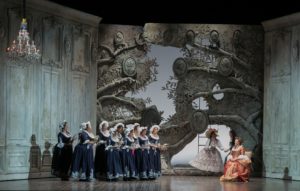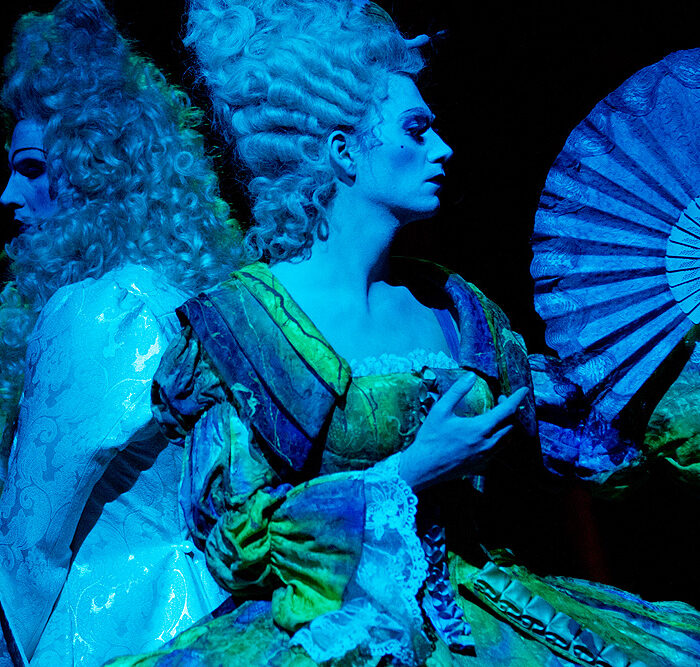
Opera Profile: Mozart’s ‘Le Nozze di Figaro,’ the Greatest Opera of All Time?
By David SalazarIs “Le Nozze di Figaro” the greatest opera of all time?
A fair share of artists certainly uphold this belief of the Mozart and Da Ponte work, which premiered on May 1, 1786.
And why not? The work features one glorious piece of music after another in a complex plot featuring some of opera’s most iconic characters. Throw in Mozart’s penchant for the brilliant use of musical form and you have a work that is part of the cornerstone of any opera season around the globe. The work is also iconic for its examination of social classes and constructs and how its characters symbolically dismantle them.
Short Plot Summary
Susanna and Figaro are to get married, but their employer, the Count Almaviva wants to have his way with Susanna. Moreover, he is planning on using Marcelina to force Figaro to marry her instead of Susanna. Figaro pledges to get revenge on his master and proposes a plan have the count receive a letter written that will give off the idea that the Countess is to have a rendez-vous with another man. They will dress up the young page Cherubino (who has a crush on the Countess and his hated by the Count) to dress up as a woman and draw the Count into an illicit affair that she can catch him attempting.
They execute the plan until the Count nearly walks in on the Countess alone with Cherubino. She tells him that it is Susanna in her closet (Susanna has left the room), and refuses to let him open the door. They walk out to find a means to pry it open. In the meantime, Susanna arrives in the room and helps Cherubino escape through a window. When the Count and Countess open the closet, they are stunned to find Susanna there. Figaro arrives and has to undo his lie, which is almost undone by Curzio protesting that he saw Cherubino jump out the window (Figaro claims that he is the one to jump). They all seem to be getting away with it all when Marcelina, Don Basilio, and Don Bartolo arrive making claims that Figaro has a debt to pay with Marcelina and must marry her instead.
In the third Act, Susanna tells the Count he will rendez-vous with her. Marcelina and Bartolo come to learn that Figaro is their long-lost son and approve of his marriage to Susanna. The Countess and Susanna come up with their own plan to switch outfits after the wedding and have the Countess, as Susanna, lure the Count away. The marriage ensues and during the celebration, Figaro notices the Count dropping a pin from the letter that Susanna gave him. The Count gives the pin to Barbarina.
Barbarina loses the pin and reveals to Figaro that she was to give it to Susanna. He concludes that Susanna is being unfaithful. Susanna and the Countess put their plan into effect and manage to lure the Count as predicted. Figaro recognizes Susanna as the Countess and the two pretend to be guilty when the Count discovers them. He is infuriated but forced to repent in front of all the guests when the Countess reveals her true identity. She forgives him and all is merry.
Famous Musical Numbers
The opera has one musical gem after another. The Countess’ “Porgi amor” features a glorious orchestral introduction before dwelling in absolute heartbreak. Cherubino’s “Voi che sapete” is highly popular outside of the context of the opera.
Mozart’s genius is most visibly on display during the Act two finale in which he manages to piece together an extended passage that starts with two characters, moves to three, then four, then five, and then ends with eight onstage at once. The movement is seamless and the tension builds up brilliantly. This passage alone is one reason many label the opera as the greatest ever.
Of course, the finale, which features one of his greatest melodies, “O Contessa perdona,” is too sublime to overlook.
Watch and Listen
In the modern era, there hasn’t been quite such a well-sung and directed production of “Le Nozze” as this one from 2006. Featuring Diana Damrau in her prime as Susanna and Ildebrando d’Arcangelo at his apex as Figaro, this production soars.
Categories
Opera Wiki

